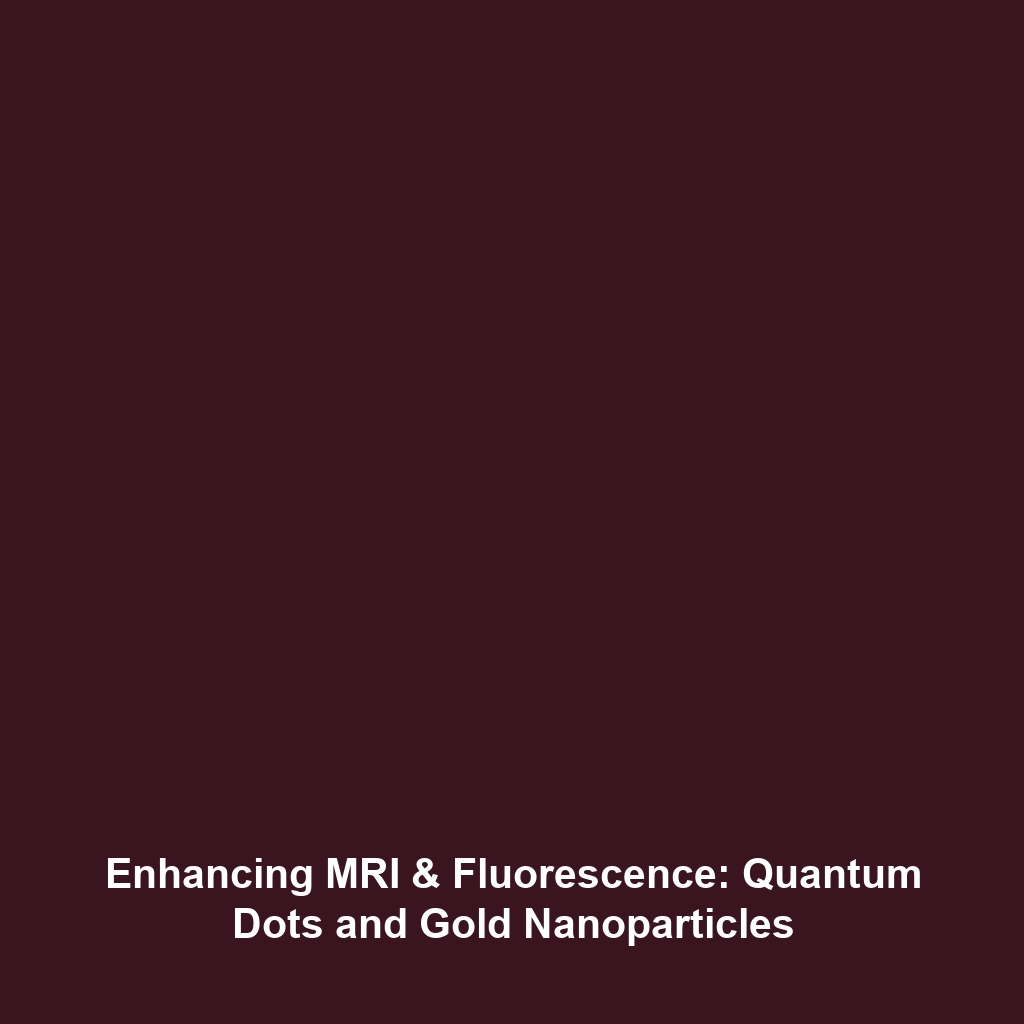Quantum Dots and Gold Nanoparticles: Enhancing Imaging Techniques
Introduction
In the rapidly evolving field of Advanced Nanomaterials, the incorporation of quantum dots and gold nanoparticles into imaging techniques has transformed medical diagnostics. These nanomaterials significantly enhance the contrast in techniques such as MRI and fluorescence imaging, leading to improved image clarity and diagnostic accuracy. The significance of these advancements lies not only in their potential to revolutionize medical imaging but also in their broader applications across various scientific disciplines.
Key Concepts
Quantum Dots
Quantum dots are semiconductor nanocrystals that exhibit unique optical properties due to quantum mechanics. Their size-tunable luminescence allows for a wide spectrum of fluorescence, making them ideal for enhancing imaging contrast. When utilized in fluorescence imaging, quantum dots can significantly improve the sensitivity and resolution of the images captured.
Gold Nanoparticles
Gold nanoparticles, known for their biocompatibility and optical properties, serve as effective contrast agents in MRI. Their ability to enhance the magnetic resonance signal leads to clearer imaging, which is crucial for accurate diagnoses. The interaction of gold nanoparticles with electromagnetic radiation also enables their application in targeted drug delivery and photothermal therapy.
Applications and Real-World Uses
The combination of quantum dots and gold nanoparticles is paving the way for innovative applications in various fields. Here are a few notable examples:
- Fluorescence Imaging: Quantum dots are utilized in tracking and imaging cellular processes, allowing for real-time observation of biological activities.
- MRI Contrast Agents: Gold nanoparticles are employed to greater effect in enhancing the visibility of tumors during MRI scans.
- Targeted Drug Delivery: Both materials can be engineered to carry therapeutic agents directly to diseased tissues, minimizing side effects and enhancing treatment efficacy.
Current Challenges
Despite the promising capabilities, several challenges persist in the study and application of quantum dots and gold nanoparticles:
- Stability of nanomaterials under physiological conditions can limit their lifespan and effectiveness.
- Potential toxicity associated with certain nanomaterials necessitates rigorous safety assessments.
- Manufacturing scalability remains a concern for widespread clinical application.
Future Research and Innovations
The future of imaging techniques benefitting from quantum dots and gold nanoparticles promises significant innovations. Ongoing research is focused on:
- Developing next-generation nanomaterials with improved biocompatibility and lower toxicity profiles.
- Enhancing the detection capabilities of MRI through advanced nanoparticles that provide greater signal enhancement.
- Integrating artificial intelligence with imaging technology to interpret data more effectively.
Conclusion
The integration of quantum dots and gold nanoparticles into imaging techniques like MRI and fluorescence imaging exemplifies the transformative potential of Advanced Nanomaterials. As research progresses, these innovations will not only elevate diagnostic capabilities but also lead to enhanced therapeutic strategies. For further reading on related topics, explore our articles on nanomaterials in medicine and advanced imaging techniques.


